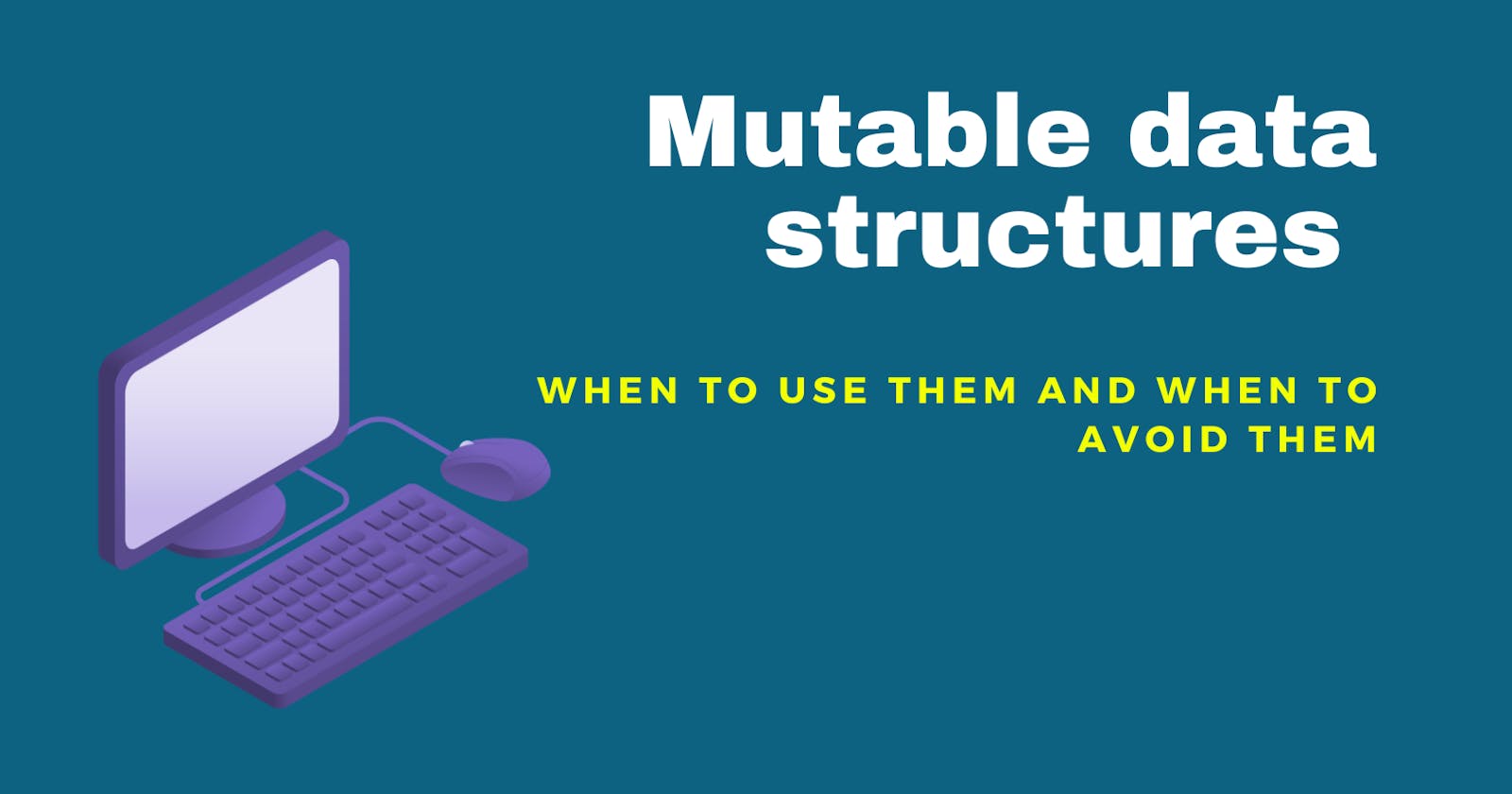Mutable data structures are data structures that can be modified once they are created. This means that when you make a change to a mutable data structure, you are actually modifying the existing data structure.
Some examples of mutable data structures include:
Arrays
Objects
Lists
Dictionaries
Sets
Mutable data structures have a number of advantages, including:
Flexibility: Mutable data structures are more flexible than immutable data structures. This is because they can be modified to meet the changing needs of your application.
Efficiency: Mutable data structures can be more efficient than immutable data structures in certain cases. This is because they do not require the creation of a new data structure for every change.
Simplicity: Mutable data structures can be simpler to use than immutable data structures in certain cases. This is because they do not require you to create new data structures for every change.
However, mutable data structures also have a number of disadvantages, including:
Thread safety: Mutable data structures are not thread-safe, which means that they cannot be safely accessed by multiple threads at the same time. This is because mutable data structures can be modified, so there is a risk of data corruption.
Predictability: Mutable data structures can make your code less predictable and more difficult to reason about. This is because you cannot be sure that the state of a mutable data structure will never change unexpectedly.
Performance: Mutable data structures can reduce the performance of your code in certain cases. This is because mutable data structures can cause unnecessary re-renders.
Overall, mutable data structures are a powerful tool that can be used to write flexible and efficient code. However, it is important to be aware of the disadvantages of mutable data structures and to use them carefully.
Here are some examples of when it might be appropriate to use mutable data structures:
When you need to modify the data structure frequently.
When the data structure is not shared between multiple threads.
When the performance benefits of using a mutable data structure outweigh the risks.
Overall, the best way to decide whether to use a mutable or immutable data structure is to consider the specific needs of your application.
